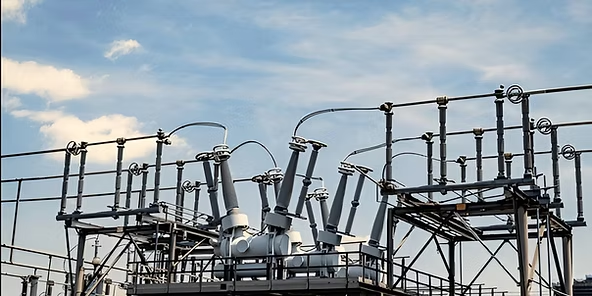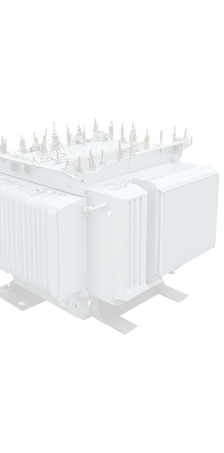In today’s energy-driven world, the use of transformer technology plays a critical role in both industrial and residential electrical systems. From managing voltage levels in power grids to stabilizing electricity in your home or data center, transformers are essential for safe and efficient power distribution.
But not all transformers are created equal. There are various types, each designed for specific applications. Understanding the differences can help you make informed purchasing decisions—especially if you’re sourcing equipment from a transformer company or looking at used transformers as a budget-friendly option.
Let’s dive into the most common types of transformers, their functions, and the use of transformer in different scenarios.
What Is a Transformer?
Before we look at types, let’s define what a transformer does. A transformer is an electrical device that transfers energy between two or more circuits through electromagnetic induction. Its primary function is to increase (step-up) or decrease (step-down) voltage levels while maintaining power.
The use of transformer ensures safe transmission of electricity over long distances, reduces power losses, and adapts energy to usable levels in various environments.
Why Understanding Transformer Types Matters
Choosing the right transformer affects:
- Energy efficiency
- Safety and compliance
- Equipment lifespan
- Installation and maintenance costs
Whether you’re managing a factory, operating a solar power plant, or outfitting a residential project, matching the transformer type to your specific needs is critical.
1. Power Transformers
Power transformers are used in transmission networks for high-voltage applications (usually above 33 kV). They’re typically found in power generation stations and substations.
Ideal for:
- Utility companies
- High-voltage transmission lines
- Energy-intensive industries
Looking for one? Explore our inventory of power transformers tailored to meet utility-grade demands.
2. Distribution Transformers
These are used to step down voltage for end-user applications and are most commonly seen on poles or in ground-mounted units in neighborhoods and commercial areas.
The use of transformer in this category includes:
- Powering homes, schools, and small businesses
- Indoor and outdoor installation
- 11kV to 220V transformations
Need an affordable option? Check out our used transformers for sale near me for pre-tested, budget-friendly distribution models.
3. Isolation Transformers
Isolation transformers separate the primary and secondary windings, ensuring there is no direct electrical connection. This helps protect devices and personnel from electric shocks and interference.
Used in:
- Medical devices
- Laboratories
- Sensitive electronic equipment
This type is often selected for its safety and signal integrity benefits rather than just voltage conversion.
4. Instrument Transformers
These include Current Transformers (CTs) and Potential Transformers (PTs), designed for monitoring and control. They provide data to relays and meters without exposing systems to high voltages.
Common in:
- Control rooms
- Smart grids
- High-voltage metering systems
Instrument transformers are crucial for maintaining reliable operation and compliance in electrical infrastructure.
5. Autotransformers
Unlike conventional transformers, autotransformers use a single winding that acts as both the primary and secondary. They’re compact and cost-effective for certain voltage adjustment applications.
Best used for:
- Voltage regulation in large motors
- Interconnecting systems with similar voltages
- Cost-sensitive industrial setups
Need expert advice on voltage matching? Contact our transformer services team for consultation.
6. Step-Up and Step-Down Transformers
While many transformers can function as either, some are specifically optimized for:
- Step-Up: Increasing voltage (commonly at generation points)
- Step-Down: Decreasing voltage (common at user endpoints)
The use of transformer in these roles is critical for efficient energy transmission and safety.
7. Dry-Type vs Oil-Filled Transformers
Both types refer to cooling and insulation methods:
- Dry-Type: Uses air for cooling and is safer for indoor use
- Oil-Filled: Uses insulating oil and is more efficient in larger or outdoor settings
Oil-filled models are more common in surplus transformers, which we refurbish and sell after thorough testing.
The Use of Transformer Across Industries
Transformers are used in nearly every sector, including:
- Manufacturing: Powering heavy machinery
- Data Centers: Stabilizing energy flow to IT infrastructure
- Healthcare: Isolated power supply for sensitive devices
- Renewable Energy: Converting voltage from solar and wind systems
- Residential: Lowering grid voltage to home-safe levels
We even provide transformers in California tailored for regional codes and energy needs.
Final Thoughts
Understanding transformer types is about more than technical specs—it’s about aligning functionality with your project’s real-world needs. Whether you’re building a substation, modernizing a facility, or upgrading electrical infrastructure, knowing the use of transformer in your context can save time, money, and headaches down the road.
At JJ Transformers, we offer a wide variety of new, used, and surplus transformers. From consultation to buying a transformer, we help you choose the right type with confidence.
Need help finding the right transformer for your project?
Explore our current inventory of used transformers or reach out for a custom quote. With nationwide delivery, full service support, and unbeatable experience, JJ Transformers is your trusted partner in power.



